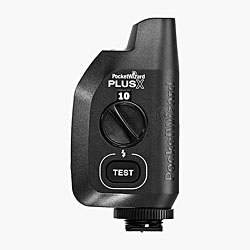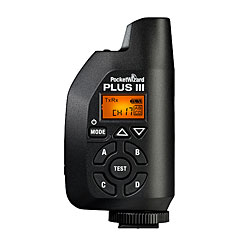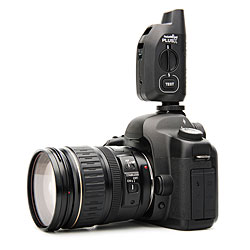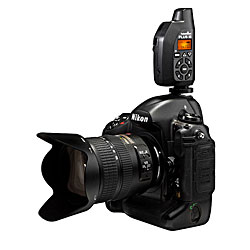LPA Design, the manufacturer of PocketWizard line of products, has recently released PocketWizard PlusX — the company's first radio transceiver priced under $100. PlusX offers the PocketWizard's quality, reliability, and compatibility, but it is more affordable than any other PocketWizard radio trigger.
The design of PlusX has a lot in common with PocketWizard Plus III, which currently costs about $50 more and offers a number of more advanced features. So, when two products appear to be that similar, the obvious question is whether it is worth spending the extra money for the higher-end unit. Let's take a closer look.
 |
 |
Image source: http://www.pocketwizard.com |
Image source: http://www.pocketwizard.com |
Both triggers have great build quality, unobtrusive side profile design with a compact internal antenna, maximum range of 1600 feet (500 meters), 14.5 frame-per-second triggering speed, auto-relay mode (to remotely trigger a camera and flashes at the same time), and compatibility with all existing PocketWizard triggers.
PocketWizard PlusX offers 10 channels, which makes it easy to find an open channel even when shooting in a busy environment. However, in some situations, like sport events or press conferences, for example, the additional 22 channels (32 total) of Plus III may come in handy.
Unlike PlusX, PocketWizard Plus III transceiver offers quad zone triggering. Using channels from 17 through 32, the triggers can be assigned to one of four zones (A, B, C, or D). The zones can be turned on and off from the Plus III unit connected to the camera. This feature is very useful when you want to check your setup and see how each group of lights contributes to the finial shot, and you can do it right from your camera position. Of course, it is even better to be able to control the output of each group from the transmitter, as well, but this feature is only available with PocketWizard FlexTT5 triggers and AC3 ZoneController.
The PlusX transceiver also lacks the USB port that Plus III units have. It means that PlusX firmware cannot be easily updated in the convenience of your home. Also, you can use USB port to power your Plus III unit externally. PlusX can only be powered by AA batteries.
Another two advanced features of PocketWizard Plus III are Long Range and Repeat Modes. By activating Long Range mode, you double the triggering range, but the sync speed is likely to be reduced. By utilizing the Repeat Mode, you can extend the range even further by placing several "repeaters" between the transmitter and receiver.
Finally, Plus III features a small LCD screen, which, among other things, has a battery level indicator. With PlusX, you need to look at the top LED, which indicates the battery status by changing the color and number of blinks. The LED does the job, but obviously, having an indicator on an LCD screen is more convenient.
PocketWizard PlusX, however, also has a couple of advantages over Plus III. It can last twice longer on a single battery charge: 100 hours instead of 50 hours of Plus III. Also, PlusX is extremely easy to use since it has a minimal number of controls.
To summarize, if you are likely to shoot in a situation where a lot of photographers are using PocketWizard radios, if controlling lighting zones from the camera position is a part of your workflow, or if Long Range and Repeat modes can aid your work, then PocketWizard Plus III is the obvious choice. If you just need a reliable set of transceivers that are well-built and easy to use, PlusX is the way to go. With PluX, you can save a third of the price you will otherwise pay for an equivalent Plus III set.
 |
 |
Image source: http://www.pocketwizard.com |
Image source: http://www.pocketwizard.com |